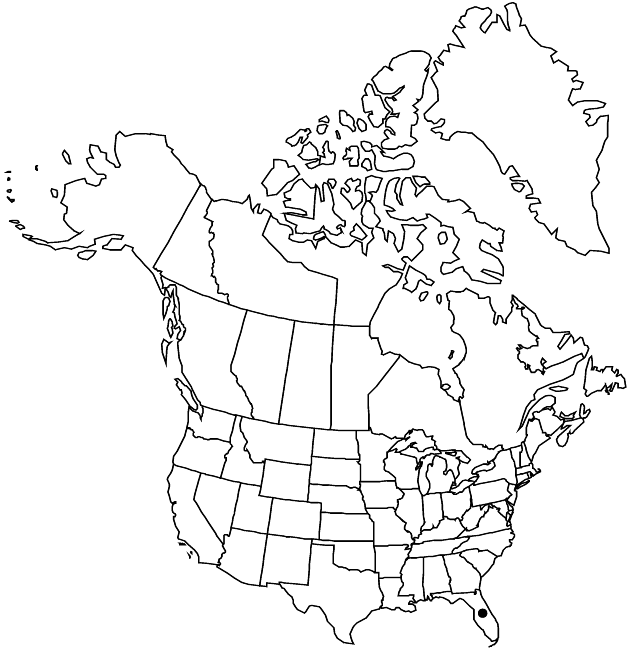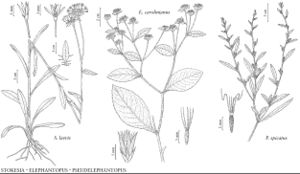Difference between revisions of "Pseudelephantopus spicatus"
Trans. Acad. Sci. St. Louis 12: 55. 1902.
Basionym: Elephantopus spicatus Jussieu ex Aublet Hist. Pl. Guian. 2: 808. 1775
Treatment appears in FNA Volume 19. Treatment on page 204.
FNA>Volume Importer |
FNA>Volume Importer |
||
| Line 52: | Line 52: | ||
|publication year=1902 | |publication year=1902 | ||
|special status= | |special status= | ||
| − | |source xml=https://jpend@bitbucket.org/aafc-mbb/fna-data-curation.git/src/ | + | |source xml=https://jpend@bitbucket.org/aafc-mbb/fna-data-curation.git/src/f50eec43f223ca0e34566be0b046453a0960e173/coarse_grained_fna_xml/V19-20-21/V19_245.xml |
|tribe=Asteraceae tribe Vernonieae | |tribe=Asteraceae tribe Vernonieae | ||
|genus=Pseudelephantopus | |genus=Pseudelephantopus | ||
Revision as of 20:16, 16 December 2019
Leaf blades mostly 3–15(–20+) cm × 10–30(–45+) mm (including petioles), both faces sparsely pilose or hirsute, often glabrescent, abaxial resin-gland-dotted. Bracts 15–45+ × 2–5+ mm. Inner phyllaries 9–12 mm, sparsely hispidulous to pilosulous (hairs 0.1–0.3 mm), often glabrescent. Cypselae 7–8 mm; pappi 1–9+ mm (including aristae). 2n = 26, 28 [3 reports, all from outside flora].
Phenology: Flowering Jan (probably year-round).
Habitat: Open places on sandy soils
Elevation: 0–10+ m
Distribution

Fla., Mexico, West Indies, Central America, South America, Asia, Pacific Islands.
Discussion
Selected References
None.
Lower Taxa
None.
